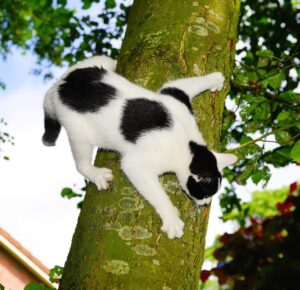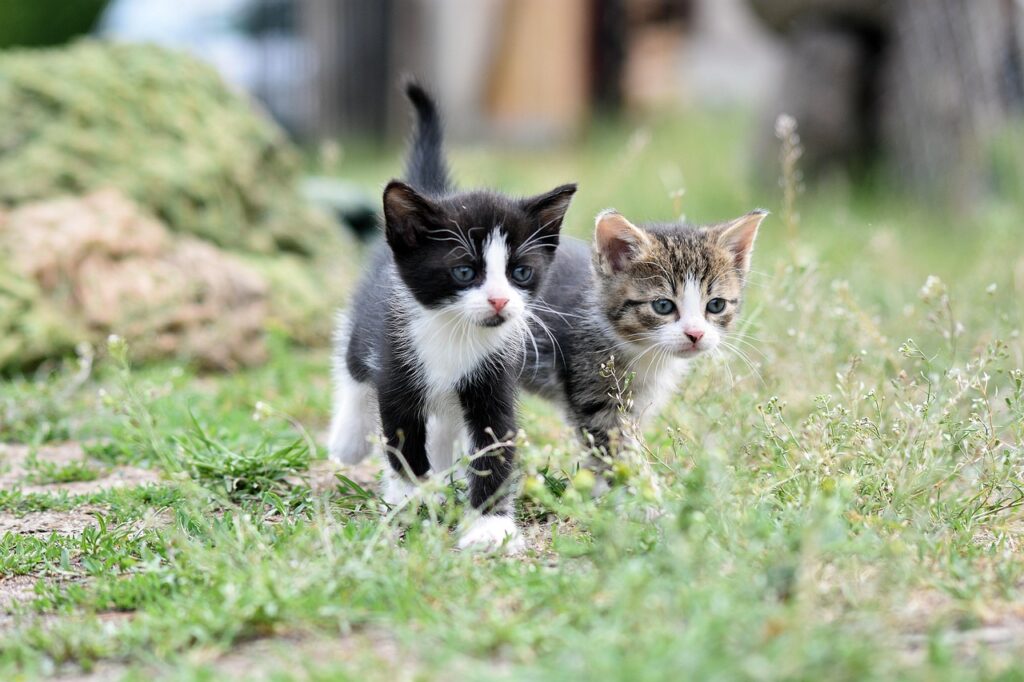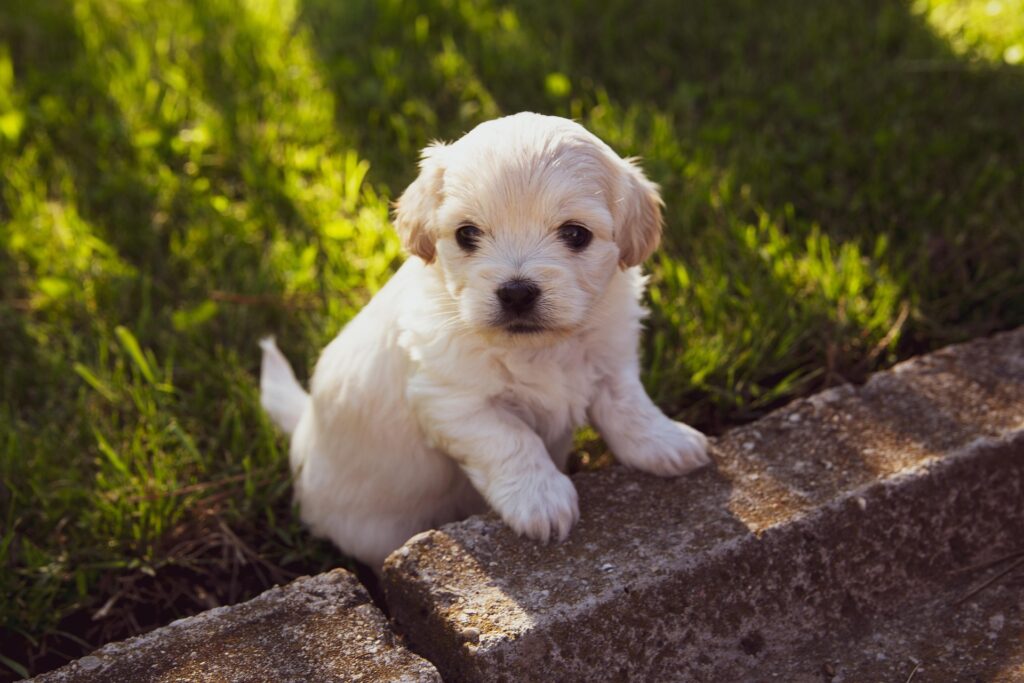Noticed something strange in your cat’s litter box? White poop isn’t normal—and it could be a sign of a serious issue. While cat poop isn’t a glamorous topic, it’s a powerful clue to your pet’s health.
This article breaks down what white poop means, what causes it, and when to worry. If you’re seeing pale or chalky droppings, don’t ignore it—read on to find out what your cat’s stool is trying to tell you.
TABLE OF CONTENT
1. Understanding Normal Cat Poop
2. Abnormal Cat Poop Colors: What White Poop Can Indicate
3. Common Causes of White Poop in Cats
4. Other Symptoms to Watch For
5. When to See a Veterinarian
6. Diagnosing the Problem: What Your Vet Might
7.FAQS
1. Is white poop in cats ever normal?
2. Can worms cause white poop in cats?
3. What if my cat eats bones or a raw diet?
4. Should I be worried if it only happened once?
5. Can liver disease cause white poop?
8.Conclusion
2. Abnormal Cat Poop Colors: What White Poop Can Indicate

A cat’s poop color can reveal a lot about their health. Normal cat poop is typically deep brown, shaped like a log, and relatively firm. But when it turns white—or pale gray—it’s a strong signal that something may be wrong.
Why White Poop Is Not Normal
White poop is not just unusual—it’s rare and often serious. Unlike some color changes that might result from a diet shift, white or chalky stool can signal deeper health concerns. It often means that your cat’s digestive system isn’t working properly or that there’s a problem with bile production.
The Role of Bile in Stool Color
Bile is a yellow-green fluid produced by the liver and stored in the gallbladder. It’s released into the small intestine to help digest fats and gives stool its brown color. When there’s a lack of bile in the digestive tract, stool may appear pale, grayish, or white.
This can occur when:
- The bile ducts are blocked.
- The liver isn’t producing enough bile.
- There’s a problem absorbing bile during digestion.
Possible Health Issues Behind White Poop
White poop can point to a variety of underlying issues, including:
- Liver or Gallbladder Problems: Conditions like bile duct obstruction, gallstones, or liver disease can disrupt bile flow.
- Pancreatic Disorders: The pancreas helps digest fats. If it’s not functioning properly (such as in exocrine pancreatic insufficiency), stool may appear pale or greasy.
- Heavy Worm Infestation: Tapeworms or roundworms may appear as small, white segments in the poop—not true white stool, but easily mistaken for it.
- Calcium Overload: A diet too high in calcium, especially from raw feeding with bones, can lead to dry, chalky-white stools.
- Medication Side Effects: Some medications may temporarily change stool color. Always check side effects with your vet.
When It’s Just a One-Time Thing
A single white stool may not be a crisis, especially if your cat is otherwise acting normal. But if it happens repeatedly or is paired with other symptoms like vomiting, lethargy, or appetite loss, don’t wait—see your vet.
3. Common Causes of White Poop in Cats
White or pale poop in cats can look alarming—and for good reason. While the color change itself is unusual, it’s usually just a symptom of something else happening inside your cat’s body. Understanding the most common causes can help you act quickly and protect your cat’s health.
1. Liver or Bile Duct Problems
One of the most serious causes of white poop is a disruption in bile production or flow. Bile is what gives poop its normal brown color. When the liver doesn’t produce enough bile or the bile ducts are blocked, the stool may appear pale or white.
Possible conditions:
- Liver inflammation or damage (hepatitis, liver cancer)
- Bile duct obstruction (from tumors, cysts, or inflammation)
- Gallbladder issues like gallstones
Other symptoms to watch for:
- Yellowing of the eyes or gums (jaundice)
- Vomiting or diarrhea
- Poor appetite
- Lethargy
2. Pancreatic Issues
The pancreas helps break down fats and other nutrients. If it’s not functioning properly, stool can become pale, greasy, or loose.
A common condition:
- Exocrine Pancreatic Insufficiency (EPI): This is when the pancreas doesn’t produce enough digestive enzymes. It leads to malabsorption and pale, foul-smelling poop.
Other signs:
- Weight loss despite a normal or increased appetite
- Frequent, soft, or fatty stools
- Poor coat condition
3. Diet High in Calcium or Bone
Feeding your cat a raw diet with excessive bone content can result in chalky-white stools. Bones are high in calcium, and too much of it can lead to hard, dry, white poop.
Risk:
Long-term feeding of bone-heavy diets can cause constipation or even blockages.
Tip:
If you’re feeding raw, balance calcium with proper organ meats and supplements, or work with a feline nutritionist.
4. Intestinal Parasites
White segments in poop are often mistaken for white stool. These are usually tapeworm segments or roundworms, which appear as tiny white grains or noodles in the feces.
Other symptoms of worm infestation:
- Scooting or dragging rear
- Increased hunger or weight loss
- Vomiting worms
- Dull coat
Action:
Your vet can run a fecal test and prescribe a safe dewormer.
5. Side Effects from Medications
Certain medications can affect bile production or digestion, which may lead to pale or white poop as a temporary side effect.
Examples include:
- Antibiotics disrupting gut bacteria
- Antacids or calcium supplements
- Anti-parasitic drugs
What to do:
If your cat recently started a new medication, contact your vet to confirm if the color change is expected.
6. Ingesting Non-Food Items
Sometimes, cats swallow things they shouldn’t—like tissue, string, or foreign objects. If these materials pass through the digestive system, they might come out in the stool and be mistaken for white poop.
Watch for:
- Vomiting
- Refusal to eat
- Straining in the litter box
When to Take It Seriously

If your cat’s poop is consistently white or light-colored, don’t ignore it. While diet or medication might be the cause, it could also signal something far more serious. Always look for other symptoms and consult your vet if you’re unsure.
- Other Symptoms to Watch For
White poop in cats is rarely an isolated issue. It often comes with other signs that can help you (and your vet) figure out what’s going wrong. Paying attention to these additional symptoms is crucial for early detection and treatment of potentially serious health problems.
1. Lethargy or Low Energy
If your normally active cat becomes sluggish or uninterested in play, it’s a red flag. Lethargy combined with white poop may suggest internal illness—possibly involving the liver, pancreas, or digestive system.
What to watch for:
- Sleeping more than usual
- Lack of response to toys or interaction
- General weakness
2. Loss of Appetite
A cat that suddenly stops eating may be experiencing discomfort, nausea, or pain. When paired with abnormal stool color, this symptom could point to liver disease, a blockage, or digestive inflammation.
Take note of:
- Skipping meals
- Eating less than usual
- Ignoring favorite treats or wet food
3. Vomiting
Vomiting is a clear sign that something’s wrong in the digestive system. If white poop and vomiting happen together, it could be due to:
- Pancreatic issues
- Liver dysfunction
- Worms
- Toxins or indigestible items
Color and frequency of vomit also matter—report these details to your vet.
4. Diarrhea or Loose Stools
Sometimes white poop may also be soft, greasy, or runny. This indicates fat malabsorption, poor digestion, or a high-calcium diet. Chronic diarrhea can cause dehydration and weakness, especially in kittens or older cats.
5. Yellowing of Eyes, Gums, or Skin (Jaundice
Jaundice is often tied to liver or gallbladder problems, which can also cause pale or white stool. It’s most noticeable in:
- The whites of the eyes
- Inside the ears
- Gums and skin (for lighter-colored cats)
If you see yellowing plus white poop, get your cat to a vet immediately.
6. Changes in Weight
Sudden weight loss—even with a normal appetite—can be a sign of:
- Poor nutrient absorption (e.g., from pancreatic insufficiency)
- Parasites
- Chronic illness
Keep an eye on your cat’s body condition. A bony back, hips, or visible ribs are concerning.
7. Dry or Itchy Skin
While it may not seem connected to digestion, skin health often reflects internal well-being. If your cat has white poop along with:
- Flaky, dry skin
- Excessive grooming or scratching
- Dull or greasy coat
…it may point to nutrient deficiencies caused by digestive issues.
Why These Symptoms Matter
White poop is unusual, but combined with other signs, it paints a fuller picture of your cat’s health. Don’t assume it’s just a dietary quirk. Trust your instincts—if something feels off, it probably is.
Early detection can mean the difference between a minor issue and a serious illness. So, take note of your cat’s behavior and bodily changes—and talk to your vet if even a few of these symptoms appear.
5. When to See a Veterinarian
Seeing white poop in your cat’s litter box can be unsettling—and it should be. While not every instance is a medical emergency, certain situations absolutely require professional attention. Knowing when to call the vet can help you act fast and protect your cat’s health.
1. White or Pale Poop Lasts More Than a Day
If your cat’s poop is white, chalky, or pale for more than 24 hours, it’s time to consult your vet—especially if the color change is consistent over multiple bowel movements. This may indicate a disruption in bile production or flow, which needs medical investigation.
2. White Poop Plus Other Symptoms
Call your vet immediately if white poop appears alongside any of the following:
- Vomiting
- Diarrhea or constipation
- Lethargy
- Loss of appetite
- Yellowing of gums or eyes (jaundice)
- Weight loss
These signs may point to liver disease, pancreatic problems, or other serious conditions that require diagnostic testing and treatment.
3. Visible Worms or Moving Segments in the Poop
If you notice tiny white specks or noodle-like worms in your cat’s stool, they likely have a parasite infection—commonly tapeworms or roundworms. These are treatable but won’t go away on their own. You’ll need a proper deworming medication prescribed by a veterinarian.
4. Your Cat Is on a Raw or Home-Cooked Diet
If your cat’s poop becomes white or chalky and they’re eating a raw diet (especially one that includes bones), they may be getting too much calcium. A vet can help you rebalance the diet safely to avoid constipation or mineral overload.
5. Poop Is Greasy, Foul-Smelling, or Floating
These symptoms can signal malabsorption issues, like Exocrine Pancreatic Insufficiency (EPI) or inflammatory bowel disease (IBD). Cats with these conditions often lose weight even though they’re eating well.
6. Changes in Poop Are Repeating or Chronic
Occasional changes in stool can happen, but if your cat frequently has pale, greasy, or abnormal poop—even if it comes and goes—it’s not normal. Chronic issues need long-term solutions and could point to underlying disease.
Why Prompt Vet Visits Matter
White poop is rarely a harmless coincidence. It’s a message from your cat’s body that something isn’t working right. The earlier you involve your vet, the better your chances of catching and treating the root cause before it becomes more serious.
Don’t rely on internet searches or guesswork. Cats are experts at hiding illness, so any unusual sign—especially something as rare as white poop—deserves a professional opinion.
6. Diagnosing the Problem: What Your Vet Might Do

If your cat is passing white poop, your veterinarian will take a systematic approach to uncover the underlying cause. Diagnosis isn’t about treating the symptom—it’s about finding the root of the problem. Here’s what you can expect during a vet visit.
1. Detailed Health History
Your vet will start by asking questions such as:
- How long has the poop been white?
- Have you noticed any other changes—vomiting, appetite loss, lethargy?
- What does your cat eat? (raw, commercial, treats, supplements)
- Has your cat recently started any new medications?
- Is your cat indoor or outdoor? (To assess parasite exposure risk)
Be prepared to share this information. Even small details can make a big difference in diagnosis.
2. Physical Examination
Next, your vet will perform a full physical check, including:
- Abdominal palpation to feel for pain, swelling, or lumps
- Gum and eye check for jaundice or dehydration
- Body condition assessment for weight loss or muscle loss
- Skin and coat condition, which can reflect internal health
3. Fecal Testing
This is a crucial step. A fresh stool sample will be tested for:
- Parasites (like tapeworms, roundworms, giardia)
- Bacteria or protozoa causing infection
- Fat content, which may indicate malabsorption or pancreatic issues
- Color, consistency, and odor, all of which offer diagnostic clues
If you can, bring a recent sample of the white stool to your appointment.
4. Blood Work
Blood tests help assess your cat’s internal organ function and may include:
- Liver enzymes (ALT, AST, ALP) to detect liver damage or disease
- Pancreatic markers (like fPLI) to evaluate pancreatic health
- Bilirubin levels, a sign of bile flow obstruction or liver dysfunction
- Complete blood count (CBC) to detect infection, inflammation, or anemia
5. Imaging Tests (X-ray or Ultrasound)
If your vet suspects a blockage, tumor, or organ disease, imaging tests may be needed.
- X-rays can show foreign objects, enlarged organs, or bone density issues (useful for raw-fed cats).
- Ultrasound provides a clearer picture of soft tissues like the liver, gallbladder, and intestines.
These tests help pinpoint whether something is physically blocking bile flow or affecting digestion.
6. Specialized Testing (If Needed)
In complex cases, your vet may recommend:
- Bile acid tests to evaluate liver function more deeply
- Endoscopy to inspect the intestines
- Biopsy of liver or intestinal tissue if cancer or chronic disease is suspected
- TLI (Trypsin-like Immunoreactivity) for diagnosing Exocrine Pancreatic Insufficiency (EPI)
Why Diagnosis Matters
Treating white poop without identifying the cause is like guessing in the dark. Proper diagnosis ensures your cat gets the right treatment—whether that’s a dietary change, deworming, enzyme support, or something more serious.
The good news? Most causes of white poop in cats can be managed or treated—if caught early. So don’t delay a vet visit if something seems off.
1. Is white poop in cats ever normal?
No, white poop is not considered normal in cats. While occasional pale stool may happen due to a dietary issue or medication, persistent white or chalky poop usually signals a health concern and should be evaluated by a veterinarian.
2. Can worms cause white poop in cats?
Not exactly. Worms themselves don’t cause white poop, but they can appear as white specks or segments in the stool. These are often tapeworm segments or roundworms and indicate a parasite infection that requires treatment.
3. What if my cat eats bones or a raw diet?
A raw diet that includes too much bone or calcium can lead to dry, white, chalky poop. While not dangerous in small amounts, long-term imbalance can cause constipation or blockages. Talk to a vet or feline nutritionist to ensure the diet is balanced.
4. Should I be worried if it only happened once?
If your cat’s poop is white just once and they’re acting completely normal, it might not be an emergency. However, monitor for any other symptoms or repeat occurrences. If it happens again, see your vet.
5. Can liver disease cause white poop?
Yes. Liver problems or bile duct blockages can reduce bile production, leading to pale or white poop. This is a serious condition that requires veterinary diagnosis and care.
Conclusion
White poop in cats is never something to ignore. While it might be caused by diet or a minor issue, it can also signal serious problems like liver disease, pancreatic disorders, or parasites. Always observe your cat for other symptoms and don’t hesitate to consult your vet. Early diagnosis and treatment can make all the difference in keeping your feline friend healthy, comfortable, and thriving. If something seems off—trust your instincts and get it checked.

